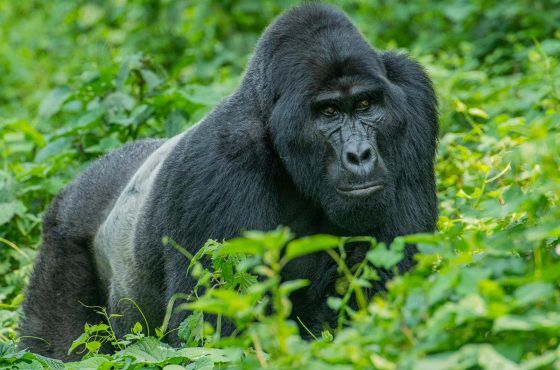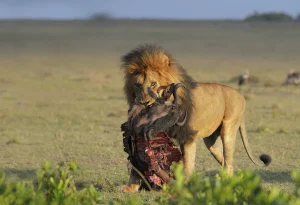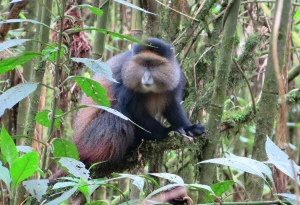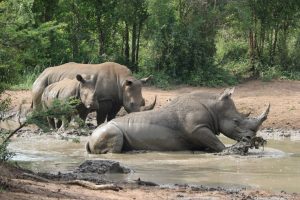If you’re dreaming of an authentic African safari experience in 2026, Uganda should be at the top of your list. Known as the “Pearl of Africa”, Uganda offers a rich blend of wildlife encounters, breathtaking landscapes, and cultural depth. From trekking the elusive mountain gorillas in the misty forests of Bwindi to watching elephants roam the savannahs of Murchison Falls, a Ugandan safari promises variety, exclusivity, and unforgettable moments.
This comprehensive travel guide breaks down everything you need to plan your Uganda safari in 2026 when to go, what to pack, where to stay, and how to create an itinerary that captures the magic of this East African jewel.
Why Plan a Safari to Uganda in 2026?
Uganda is emerging as a premier safari destination thanks to its unique combination of rainforest and savannah ecosystems. Unlike some safari destinations that offer only traditional game drives, Uganda brings the chance to track gorillas, chimpanzees, and golden monkeys, all while enjoying classic wildlife viewing of the Big Five.
In 2026, with infrastructure improving and conservation efforts intensifying, Uganda is expected to offer even better accessibility, more eco-lodges, and improved visitor experiences. The earlier you plan, the more prepared you’ll be to secure the best permits, lodges, and guides.
When Is the Best Time to Visit Uganda for a Safari?
Uganda’s equatorial climate is generally pleasant year-round, but the dry seasons are the best for safaris:
- June to September: Ideal for gorilla trekking, game drives, and birding.
- December to February: Less rain, excellent wildlife sightings, and warm temperatures.
These months offer optimal trekking conditions, clearer skies for photography, and easier wildlife spotting. If you’re traveling in March–May or October–November, expect lush scenery and fewer crowds, but prepare for some rain and muddy trails.
Top Safari Destinations to Include in Your 2026 Uganda Itinerary
A successful Ugandan safari blends primate trekking, game viewing, and cultural experiences. Consider including the following parks:
1. Bwindi Impenetrable National Park
- Home to more than half of the world’s remaining mountain gorillas.
- Offers incredible gorilla trekking experiences with strict conservation protocols.
- Trekking is physically challenging but immensely rewarding.
- Gorilla trekking permits: $800 USD per person in 2026.
2. Queen Elizabeth National Park
- Known for tree-climbing lions in the Ishasha sector.
- Boat cruises on the Kazinga Channel offer up-close views of hippos, elephants, and crocodiles.
- The park is great for leopard sightings, birding, and cultural visits.
3. Murchison Falls National Park
- Uganda’s largest park, bisected by the River Nile.
- Famous for the Murchison Falls where the Nile squeezes through a narrow gorge.
- Home to lions, giraffes, elephants, and a variety of birds.
4. Kibale Forest National Park
- Best destination for chimpanzee tracking.
- Hosts over 13 primate species, lush forest trails, and rich birdlife.
- Chimpanzee permits in 2026 cost approximately $250 USD per person.
5. Lake Mburo National Park
- Offers walking safaris and cycling experiences.
- Ideal for those looking for a gentle start or end to a safari.
6. Kidepo Valley National Park
- Remote and less visited, offering a truly wild experience.
- Features dramatic landscapes and rare wildlife like cheetahs and ostriches.
How Many Days Are Ideal for a Uganda Safari?
A safari to Uganda in 2026 can range from a 5-day quick gorilla trek to a 14-day in-depth wildlife and culture experience. Here’s a basic structure:
- 7–10 days: Ideal for a balance of gorilla trekking, chimpanzee tracking, and big game safaris.
- 3–4 days: Great for focused gorilla or chimpanzee trekking.
- 10–14 days: Recommended for travelers who want to explore multiple parks, cultural sites, and scenic locations.
What Will a Safari to Uganda in 2026 Cost?
Safari costs in Uganda depend on travel style, group size, season, and choice of accommodation:
| Activity | Estimated Cost (USD) |
|---|---|
| Gorilla Permit | $800 per person |
| Chimpanzee Permit | $250 per person |
| Park Entry Fees | $40–$70 per person/day |
| Mid-range Safari Package | $350–$600 per person/day |
| Luxury Safari Package | $700–$1,200 per person/day |
| Budget Safari | $200–$300 per person/day |
Additional costs may include international flights, domestic transfers, tips, visa fees, and optional cultural excursions.
What to Pack for a 2026 Safari to Uganda
Pack light but smart, with layers and protection from both sun and rain:
- Lightweight, long-sleeved clothing in neutral colors.
- Waterproof hiking boots for treks.
- Rain jacket and poncho (especially for forest hikes).
- Hat, sunglasses, and high SPF sunscreen.
- Insect repellent and anti-malarial medication.
- Reusable water bottle and snacks for long drives.
- Binoculars and a camera with extra batteries and memory cards.
- Travel documents and copies: passport, visa, health certificates, permits.
Travel and Entry Requirements for 2026
Uganda welcomes visitors with an e-visa system. Here’s what you’ll need:
- Apply online before travel or get a visa on arrival (subject to current policies).
- A valid passport with at least 6 months before expiry.
- Proof of yellow fever vaccination is mandatory.
- COVID-19 protocols may still apply; check closer to your departure.
International flights typically land in Entebbe International Airport, near the capital Kampala. From there, safaris begin either by road transfer or internal flights to safari destinations.
Accommodation Options for Every Budget
Whether you’re seeking luxury lodges, eco-friendly midrange camps, or budget guesthouses, Uganda has it all:
- Luxury Lodges: Clouds Mountain Gorilla Lodge, Nile Safari Lodge, Apoka Safari Lodge.
- Midrange Options: Engagi Lodge, Pakuba Safari Lodge, Kyaninga Lodge.
- Budget Choices: Buhoma Community Rest Camp, Red Chilli Hideaway, Bush Lodge.
In 2026, expect newer and more eco-conscious accommodations as tourism demand rises.
Booking Tips for a Smooth Uganda Safari in 2026
- Book early: Especially for gorilla permits and top lodges. Six to twelve months in advance is ideal.
- Work with a reputable tour operator: Local experts know the terrain, regulations, and logistics.
- Include buffer days: For travel delays, weather disruptions, or spontaneous excursions.
- Travel insurance: Strongly advised for medical coverage, cancellations, or interruptions.
- Be flexible: Wildlife sightings aren’t guaranteed on a schedule.
Why Uganda in 2026?
Choosing a safari in Uganda for 2026 means stepping into a country where conservation meets adventure. With upgraded infrastructure, more eco-conscious tourism models, and enhanced safety and hospitality, Uganda offers an unforgettable journey tailored to wildlife lovers, nature photographers, and adventurous families alike.
If you’re planning your trip early, you’ll benefit from better availability, flexible options, and expert guidance. A Uganda safari in 2026 isn’t just a trip—it’s a transformative experience that leaves you with more than just memories.
Ready to plan your Uganda safari for 2026? Let’s help you build the perfect itinerary tailored to your budget, interests, and timeline.




